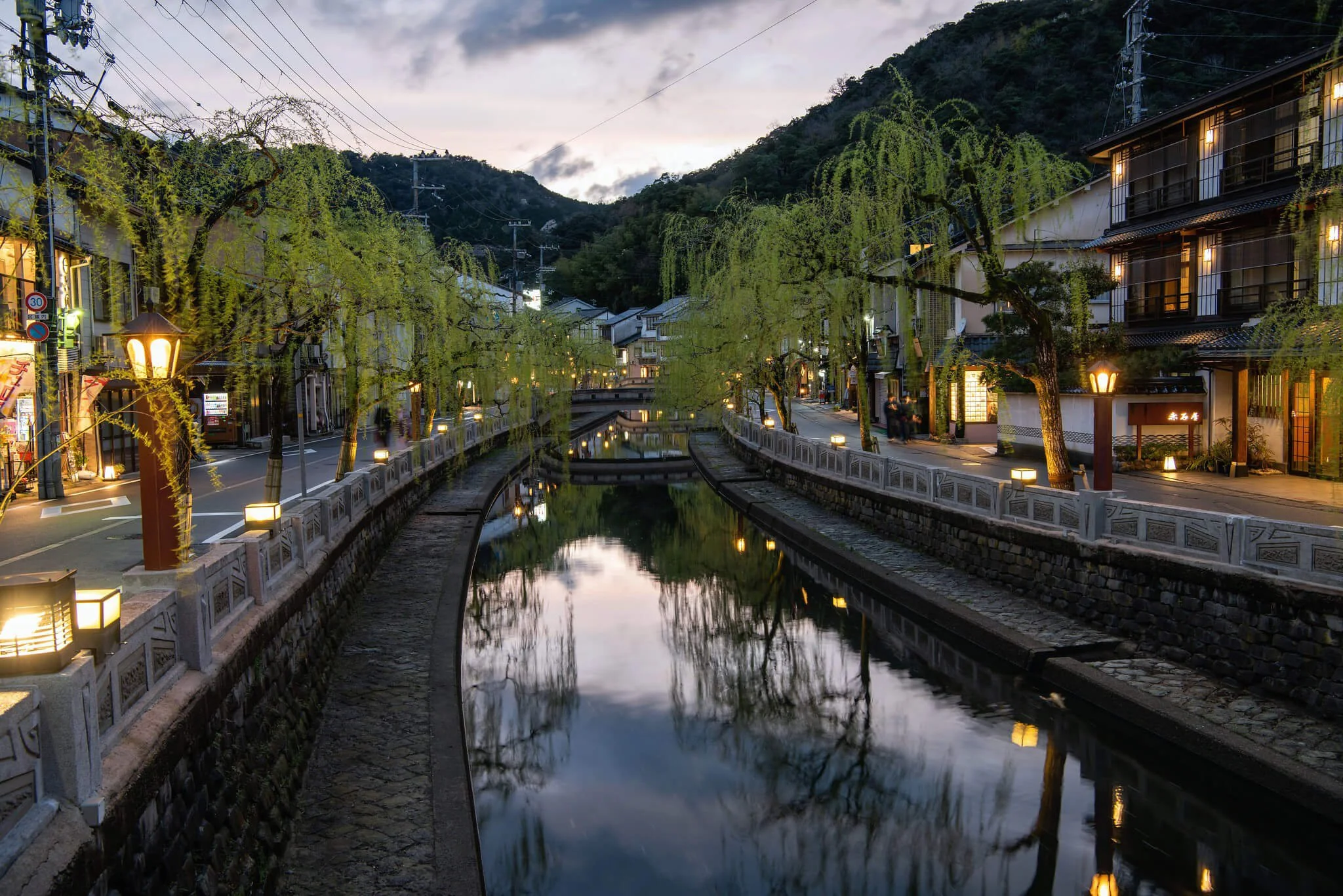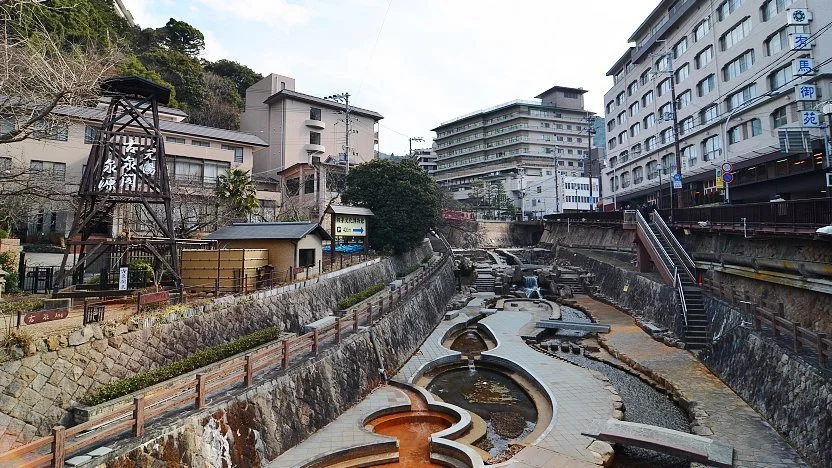Rest And Relax: 12 Best Onsens To Experience Across Japan
Japan's onsens, also known as hot springs, are havens of pure relaxation and natural beauty. They are often celebrated as must-visit attractions that provide a deep and immersive cultural experience. Each region in Japan boasts its own distinctive onsens, each with unique features and majestic local landscapes.
There are also great benefits that come with soaking in the natural minerals of the hot springs as it helps with pain relief like aching joints or stiff shoulders, improve blood circulation, and can even help smooth and soften dry skin. Whether you’re seeking a quiet, snow-draped soak near Mount Fuji or a calming dip in the Japanese countryside, these onsen resorts provide a tranquil escape from the busy city life.
Dive into our list of 12 must-try onsens spanning from the Kanto and Kansai regions to Kyūshū , and discover the ideal hot springs to immerse yourself in.
Kanto Region
(1) Kusatsu Onsen
(2) Manza Onsen
(3) Hakone-Yumoto Onsen
(4) Kinugawa Onsen
Kansai Region
(5) Kinosaki Onsen
(6) Arima Onsen
(7) Shirahama Onsen
(8) Dorogawa Onsen
Kyūshū Region
(9) Beppu Onsen
(10) Yufuin Onsen
(11) Kurokawa Onsen
(12) Ryukyu Onsen Ryujin no Yu
If you are new to the onsen experience, don’t worry! Here is a quick guide to essential onsen etiquette to help you feel confident and avoid any cultural missteps in front of the locals.
Most onsens still require full nudity and forbid any tattoos, so do contact the onsen further on how strict they are regarding such rules before your visit.
Always shower first before entering the pools, there will be showers near the changing area and onsen so you could sit on the small stools and wash up first before starting the onsen dip.
When you are finished showering, pat yourself dry, but avoid leaving your towel near the showers. And definitely do not let it touch the onsen water. Instead, place it to the side of the bath or, like the onsen pros, balance it on your head while you soak.
Kanto Region
(1) Kusatsu Onsen
Source: Kusatsu Onsen
Located northwest of Tokyo, Kusatsu Onsen is a hot spring resort located in Gunma Prefecture. With 19 public bathhouses, three of which are officially open to visitors. Visitors can bathe with lcoals and fully immerse in the atmosphere of Kusatsu that differs from the other baths found at Japanese hotels or ryokans. This hot springs center boasts the largest natural hot spring flow in Japan with over 32,000 litres of hot spring water gushing out every minute. Kusatsu is a small and cozy town with the Yubatake (hot water field) in its center so most tourist attractions and ryokans in the town center are easily accessible on foot.
Source: Kusatsu Onsen
Kusatsu Onsen can be visited all year round. The resort is located on a cool plateau at an altitude of 1,200m, so even in summer, you can forget about the heat of the city and relax in a cool environment. Meanwhile during autumn, you can witness the changing of leaves and see the landscapes turning into a gorgeous sea of orange and yellow.
Kusatsu Onsen
Location: Kusatsu Onsen, 401 Kusatsu, Agatsuma District, Gunma 377-1711, Japan
Access: One to two and a half hours from Tokyo by Shinkansen and bus
Website
(2) Manza Onsen
Source: Visit Gunma
Located at an altitude of 1,800m above sea level, Manza Onsen is a high-mountain hot spring village surrounded by greenery in the Joshinetsu Kogen National Park. High up on the slopes of Mount Shirane in the Gunma Prefecture, its highly acidic waters are said to be among the most sulfuric in all of Japan. Hence, the beautifying effect of the sulfuric waters makes it highly popular with the ladies. There are a few hotels and ryokans around the area and the open air baths here are most definitely a highlight in winter because snowfall is promised every winter in this particular resort town.
Source: Manza Onsen
Manza Onsen
Location: Manza Onsen, Hoshimata, Tsumagoi, Agatsuma District, Gunma 377-1611, Japan
Access: The quickest route from Tokyo to Manza Kazawaguchi Station is by taking the Shinkansen and a local train via Takasaki, which takes about 2.5 hours. Alternatively, you can also make the journey entirely by local trains, which takes approximately four hours with one transfer at Takasaki.
Website
(3) Hakone-Yumoto Onsen
Source: Hakone Yumoto
As one of Japan’s leading tourist destinations, Hakone has a history of hot spring bathing that traces back 1,200 years. During the Edo period, the common locals developed hot springs as a tourist attraction. Located just an hour away from Tokyo (by train), Hakone Yumoto is a popular onsen spa resort choice for many tourists due to its close proximity to Japan’s highest mountain Mount Fuji. There are certain spots where you can see the glorious Mount Fuji, and one can only imagine how amazing the view must be while soaking in the comforting hot springs. The recommended time to visit Hakone is during spring or autumn, as visitors could appreciate the beautiful cherry blossoms or colourful autumn leaves at the resort.
Source: Hakone Yumoto
Hakone Yumoto Onsen
Location: Hakone-Yumoto Onsen, 657 Yumoto, Hakone, Ashigarashimo District, Kanagawa 250-0311, Japan
Access: Hakone-Yumoto Station serves as the main gateway to Hakone, hence it is easily reachable from Shinjuku Station where you can take the Odakyu Line directly to Hakone-Yumoto Station, a journey of approximately 90 minutes.
Website
(4) Kinugawa Onsen
Source: Visit Tochigi
Kinugawa Onsen is a hot spring resort in the city of Nikko, Tochigi, Japan. It is located along the Kinugawa River, while the town is centered around a large hotel ryokan lining the riverbank. It has a long history dating back to the Edo period where this hot spring resort could only be used by priests and feudal lords. It was only opened to the public during the Meiji period, then developed into one of the largest hot spring resorts in the Kanto region. The spring water at Kinugawa Onsen is weak in alkaline so it is said to be gentle on the skin and has a positive and calming effect on the nervous system. With several amusement parks near the onsen, families can also add the Tobu World Square and Nikko Edomura theme parks to their itinerary.
Source: Visit Nikko
Kinugawa Onsen
Location: Kinugawa Onsen Ohara, Nikko 321-2522 Tochigi, Japan
Access: Kinugawa Onsen falls within the free travel zone covered by Nikko Passes so it is an excellent spot to spend the night while exploring Nikko.
Website
Located at an altitude of 1,800m above sea level, Manza Onsen is a high-mountain hot spring village surrounded by greenery in the Joshinetsu Kogen National Park. High up on the slopes of Mount Shirane in the Gunma Prefecture, its highly acidic waters are said to be among the most sulfuric in all of Japan. Hence, the beautifying effect of the sulfuric waters makes it highly popular with the ladies. There are a few hotels and ryokans around the area and the open air baths here are most definitely a highlight in winter because snowfall is promised every winter in this particular resort town.
Kansai region
(5) Kinosaki Onsen
Source: Kinosaki Onsen
With over 1300 years of history, Kinosaki Onsen is steeped in legend and healing. It is located in Toyooka City, Hyogo Prefecture in the Kansai region of Japan. This quaint hot spring town is home to 7 public bathhouses, each offering different wellness benefits thanks to its sodium-calcium chloride-rich waters. Visitors can experience bathhouse-hopping in yukata and the scenic willow-lined streets along the Otani River makes Kinosaki a standout among Japan’s hot spring towns.
Source: Kinosaki Onsen
Kinosaki Onsen
Location: 1188-3 Oshima, Toyoka-shi, Hyogo, 669-6123 Japan
Access: Nestled between the mountains and the Sea of Japan, it offers a peaceful retreat about 2.5 hours from Kyoto and 3 hours from Osaka via train.
Website
(6) Arima Onsen
Source: Visit Arima
Arima Onsen is one of Japan’s oldest and most revered hot spring resorts. Located in the Kansai region on the northern slopes of Mount Rokko in Kobe City, this celebrated onsen has two distinct types of spring waters: Kinsen (Gold Spring) and Ginsen (Silver Spring). The Kinsen is rich in iron and salt, turns a golden-brown hue when oxidised and is loved for its soothing effects on arthiritis and neuralgia. The Ginsen, a colourless, carbonated spring with traces of radium is thought to enhance blood circulation and metabolism. Its mineral-rich waters are sourced from ancient seawater, extracted from 60km underground. The town’s historical vibe is enriched by the shrines and temples around.
Source: Japan Guide
Arima Onsen
Location: Arima Onsen, Arimacho, Kita Ward, Kobe, Hyogo 651-1401, Japan
Access: Just 30 minutes from Kobe-Sannomiya, Arima Onsen offers various day-trip bathhouses and ryokans for short trips.
Website
(7) Shirahama Onsen
Source: Japan Travel
With over 1,350 years of history, Shirahama Onsen in Wakayama Prefecture is a timeless destination perched on the picturesque west coast of the Kii Peninsula. Known as one of Japan’s Three Ancient Hot Springs, the highlight is the Saki-no-Yu open-air bath which promises an unbelievable ocean view. With pristine white sands and a seaview that takes your breath away, this makes Shirahama Onsen one of the most relaxing spots to soothe your body after a day of travel.
If you visit during summer, be sure to drop by Shirahama Beach for a rejuvenating dip or dive right into the marine sports. There will also be exciting events during the summer such as the Fireworks Festival.
Source: Japan Guide
Shirahama Onsen
Location: 868 Shirahama-cho, Nishimuro-gun, Wakayama Prefecture, 649-2211, Japan
Access: Just a 10-minute bus ride from Nanki-Shirahama Airport, it is an ideal choice for visitors arriving on the one-hour flight from Haneda Airport.
Website
(8) Dorogawa Onsen
Source: Japan Travel
Tucked in the mountains of Nara Prefecture, Dorogawa Onsen is a hot spring town with over 400 years of history. This serene retreat was once a haven for Shugendo practitioners, ascetic monks who trained in the sacred mountains nearby. Today, Dorogawa Onsen preserves its nostalgic Showa-era charm with traditional inns and shops that line the main street.
The town’s simple alkaline hot springs are gentle yet therapeutic, reputed to relieve muscle pain and fatigue. Known for its Gorogoro Mizu spring water from the local spring, many locals often bring gourd-shaped bottles to collect and enjoy the refreshing spring water. Situated in the peaceful mountains, Dorogawa Onsen is ideal for a tranquil relaxation retreat to soak in the calm and peaceful atmosphere of the mountains.
Source: Japan Travel
Dorogawa Onsen
Location: Dorogawa, Tenkawa, Yoshino District, Nara 638-0431, Japan
Access: About a two-hour car ride from Japan’s formal capital, Nara.
Website
Kyūshū Region
(9) Beppu Onsen
Source: Visit Kyushu
Beppu Onsen is one of Japan’s most famous hot spring towns, renowned for producing the highest volume of hot spring water in the country. Just within Beppu city, there are 8 different hot spring resorts called “Beppu Hatto”. It offers visitors a variety of onsen experiences from hot water and sand baths to steam and mud baths. A trip to Beppu is not complete without seeing the famous “Hells of Beppu” where there are 7 vibrant hot springs for viewing rather than bathing, each with vibrant colours and geothermal phenomena.
Source: ANA
Beppu Onsen
Location: Beppu City, Oita 874-0905, Japan
Access: Located in Oita Prefecture on Kyushu Island, you can take a 2-hour train from Fukuoka, Hakata Station to Beppu Station.
Website
(10) Yufuin Onsen
Source: Visit Kyushu
Positioned between Oita City and Beppu, Yufuin Onsen is set within a basin with abundant nature and crystal-clear rivers. This onsen is particularly popular among ladies as its mild mineral content and high metasilicic has amazing effects for the skin. Known as an “art town”, Yufuin features various galleries and art spaces displaying paintings, pottery, and sculptures, offering visitors a different cultural experience alongside the relaxing hot springs. One can soak in the onsen while taking in the magnificent views of Mount Yufu and explore the artsy streets afterwards.
Source: Visit Kyushu
Yufuin Onsen
Location: Yufuin-cho, Yufu-shi, Oita 879-5102, Japan
Access: You can take a scenic two-hour train from Fukuoka to Yufuin.
Website
(11) Kurokawa Onsen
Source: Kurokawa Onsen
At the foot of Mount Kurokujin in Kumamoto Prefecture is Kurokawa Onsen, a quaint yet charming hot spring town that houses around 30 ryokans and 26 open-air baths. It provides visitors with the traditional serene onsen experience in the relaxing and scenic Japanese countryside. Spend the day open-air bath hopping by trying various outdoor baths across town using a nyuto tegata (bath pass).
Source: Kurokawa Onsen
Kurokawa Onsen
Location: 6594-3 Manganji, Minami-oguni-machi, Aso-gun, Kumamoto, Japan
Access: You can take a 3-hour bus ride from Kumamoto Station to Kurokawa Onsen or take a direct bus from Hakata Station or Fukuoka Airport which is slightly quicker at around 2.5 hours.
Website
(12) Ryukyu Onsen Ryujin no Yu
Source: Ryukyu Resorts
Known as the “hot spring of fertility”, the name Kodakara no Yu translates to “a hot springs that will bless you with children”. These waters at Ryukyu Onsen Ryujin no Yu provide a rich warmth that promotes relaxation and wellbeing. Located on Senaga Island in Okinawa Prefecture, this luxurious hot spring has mineral-rich waters that gush from 1,000 meters below the island’s surface at 500 liters per minute. Well-positioned along Okinawa’s picturesque West Coast, the onsen serves sweeping views of the Kerama Islands with unbelievable sunsets.
Source: Ryukyu Resorts
Ryukyu Onsen Ryujin no Yu
Location: 174-5 Senaga, Tomigusuku, Okinawa 901-0233, Japan
Access: To get here, it is a 15-minute drive from Naha Airport or you could also take a bus from the Naha city center to the Umikaji Terrace stop on Senaga Island.
Website
Enjoyed reading our articles? Check out others below!




























From pristine sandy Okinawan beaches to the beautiful lavender fields in Hokkaido, here’s where you can head to in Japan that isn’t Tokyo and Osaka!